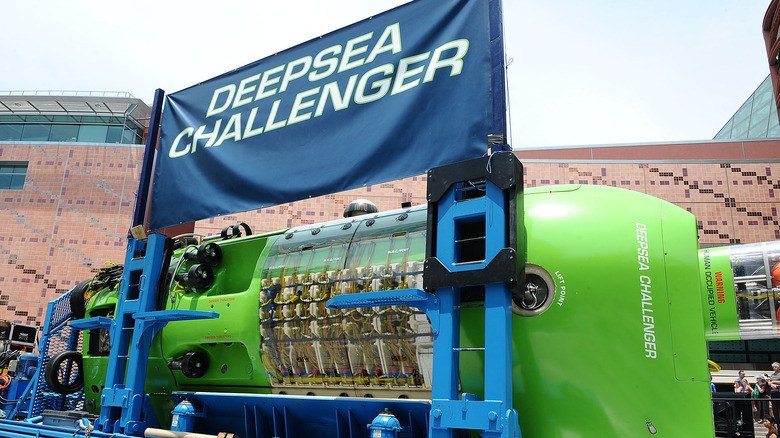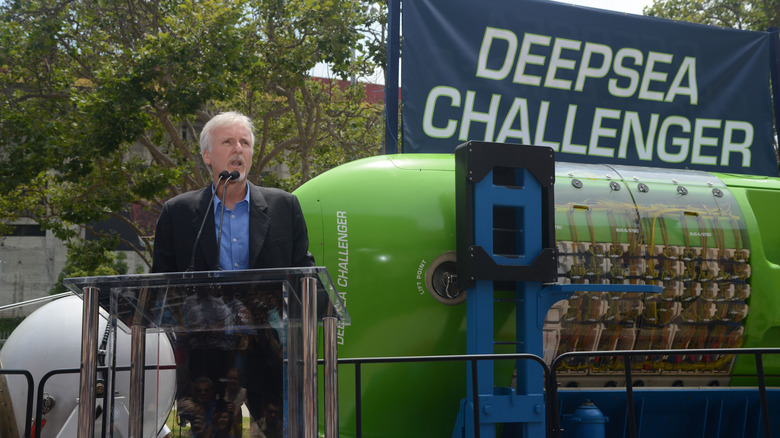How James Cameron Completed A Record Breaking Submarine Dive In The Mariana Trench
Director James Cameron has made 33 dives to the wreckage of Titanic, but that's not the deepest he's been in any of the world's oceans. In March of 2012, Cameron made a journey to the Mariana Trench, one of the deepest spots on the planet. The entire trip was about 70 minutes, and it was done using a specially designed submersible. This craft helped him become the first human to reach the trench solo. The previous trip, back in 1960, took a total of two hours and 36 minutes and had a two-man crew.
Cameron didn't just go to the bottom of the ocean and back, but he instead took some time to explore the surface floor. His sub was equipped with cameras to film the floor of the ocean, which captured both videos and still images. These images were both able to provide scientific value as well as good fodder for a documentary on the bottom of the ocean floor.
Cameron dove in a 24-foot submarine
The submarine Cameron took boasted just a 43-inch-wide cockpit, but the craft itself was equipped with an eight-foot tower of LED lights to help capture images. The ship, named the Deepsea Challenger, was 24 feet long, and Cameron was able to see through a window that was nine inches thick. Despite the cramped cockpit, Cameron didn't run into any issues diving or surfacing.
Walter Sipes, an aeronautics psychologist at NASA, said Cameron's health played a factor in him being able to successfully complete the dive. "He's got prior experience doing this, not just in the simulator but also training dives ... and he's an adventurer, so I really don't think they'll have any issues to worry about," Sipes told National Geographic.
Despite the reported ease of the dive, several parts of the sub were destroyed by the 16,000 pounds per square inch of pressure. Cameron said his compass glitched, his batteries were low, and he lost control of two of the thrusters. The sub was tested twice in a pressure chamber that reached 16,500 PSI of pressure, a test it passed twice.
Many new species were discovered
As part of the dive, Cameron was able to assist in discovering over 60 new species, and he is predicted to find even more if he goes back.
"We did find 68 new species, most of them bacteria, but some small invertebrates, as well, that were brought back," he told NPR.
After going where no single man had gone before, Cameron was ready to return to dry land. Speaking to National Geographic, he said was relieved when the ship started to come to the surface.
"I feel the sub buck and rock as it fires upward," he said. "I'm going over six knots, the fastest the sub has ever gone, and I'll be on the surface in less than an hour and a half. I imagine the pressure coming off the sub, like a great python that was unable to crush it slowly giving up its grip. A feeling of relief washes over me as the numbers get progressively lower."
As recently as February 2023, the submarine was open to public viewing at the Natural History Museum of Los Angeles to celebrate the 10-year anniversary of the dive.


